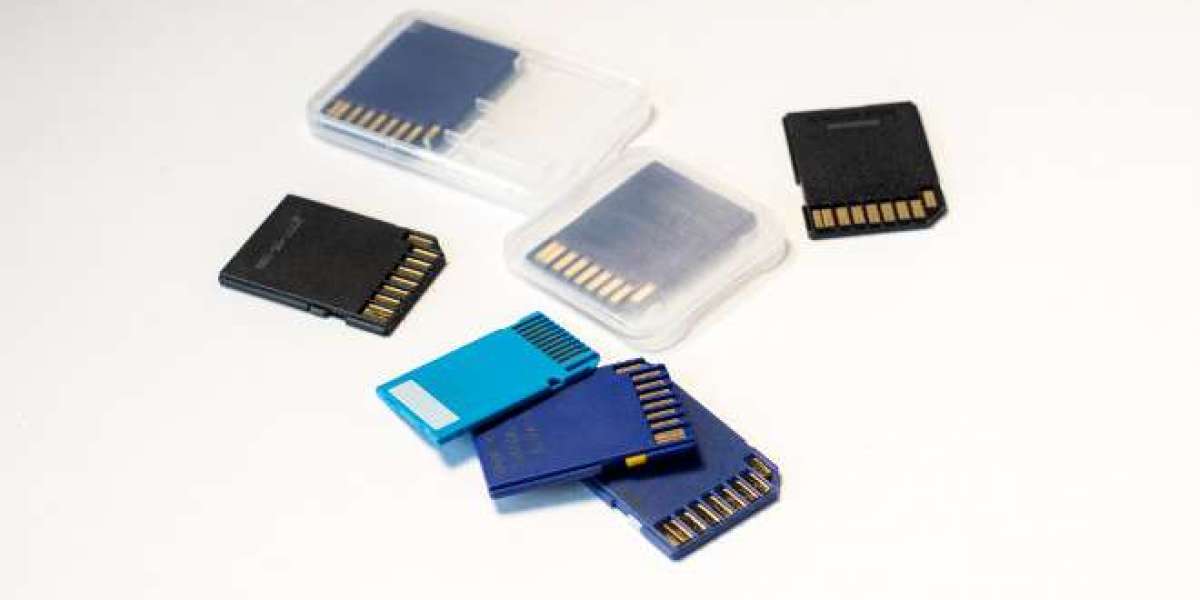The SD memory card market, a pivotal component in portable data storage, faces several critical challenges amid evolving technology trends, shifting consumer behaviors, and intensifying competition. These hurdles are redefining how manufacturers approach innovation, cost, and sustainability in a market once dominated by reliability and capacity alone.
1. Technological Obsolescence and Evolving Standards
One of the foremost challenges for the SD card market is rapid technological change. Devices are increasingly adopting faster, more compact, and integrated storage solutions like UFS (Universal Flash Storage) and embedded multimedia cards (eMMC). These alternatives often offer higher data transfer speeds and more reliable performance, especially in high-demand applications like smartphones and high-resolution cameras.
In addition, the shift to cloud storage reduces dependency on physical memory cards. With internet speeds improving and cloud platforms offering seamless syncing and retrieval, consumers and enterprises are opting for virtual storage rather than expanding local capacity via SD cards.
2. Declining Demand in Traditional Consumer Electronics
Historically, SD cards found robust demand in digital cameras, camcorders, GPS systems, and mobile phones. However, smartphones now often feature non-expandable internal memory, and high-end cameras are turning to newer formats such as CFexpress or XQD cards for better performance. This trend shrinks the consumer base for standard SD cards, impacting overall market volume.
Also, the rise of integrated storage in drones, gaming consoles, and IoT devices reduces reliance on detachable memory. While SD cards remain in demand for hobbyists and prosumers, the mass-market consumption they once enjoyed is declining.
3. Intense Price Competition and Thin Margins
Another pressing issue is price competition. The SD memory card market is flooded with numerous players, particularly in Asia, leading to commoditization. Many manufacturers engage in aggressive pricing strategies to capture market share, which significantly compresses profit margins.
Additionally, counterfeit SD cards have become a growing menace. These low-quality or fake products not only affect the reputation of legitimate brands but also flood the market at unsustainably low prices, creating confusion among consumers and undermining brand loyalty.
4. Capacity and Speed Limitations vs. Application Demands
Modern applications demand higher speed and capacity, especially with the proliferation of 4K/8K video, AR/VR, and professional-grade photography. While SDXC and SDUC formats offer high storage capacities, there is still a gap between what current cards can handle and what advanced devices require in terms of read/write speed and endurance.
This challenge forces manufacturers to continually invest in R&D, which becomes difficult to justify amidst shrinking returns. Moreover, maintaining backward compatibility with older devices while upgrading standards adds another layer of complexity.
5. Environmental and Regulatory Pressures
With increasing emphasis on sustainability, environmental regulations are becoming more stringent. SD cards are made from plastic and other non-biodegradable materials, and their small size makes them easy to misplace or discard. Manufacturers must now consider eco-friendly designs and recycling programs, increasing costs and complicating production.
Additionally, international trade policies and supply chain disruptions—such as those witnessed during the COVID-19 pandemic—have exposed vulnerabilities in raw material sourcing and logistics, further challenging market stability.
6. Data Security and Reliability Concerns
While SD cards are convenient, their removable nature also poses security risks. Data corruption, card failure, and loss are common issues that plague users, particularly in professional settings. As cybersecurity becomes a paramount concern across industries, reliance on removable storage is viewed as a potential vulnerability.
Enterprises and institutions often prefer secure cloud or encrypted internal storage over SD cards, which limits market expansion opportunities, especially in sectors like healthcare, defense, and finance.
Conclusion
The SD memory card market is at a crossroads, faced with technological evolution, market saturation, and shifting user needs. While it continues to serve a niche of portable storage solutions, it must adapt to survive. Innovations in speed, capacity, durability, and environmental responsibility will determine which players remain relevant. To thrive, companies must reposition their offerings while exploring partnerships and alternative applications beyond traditional consumer electronics.






